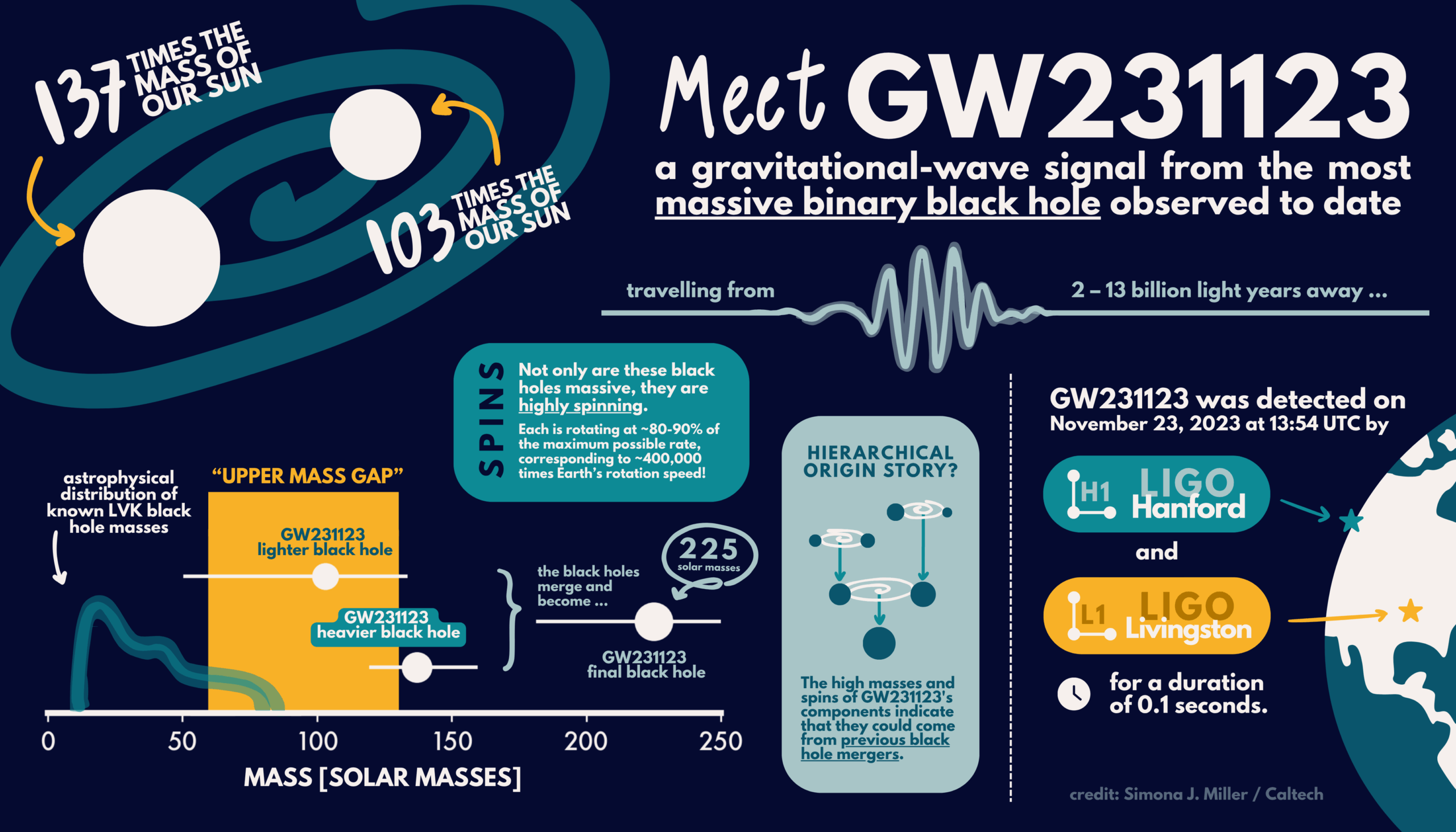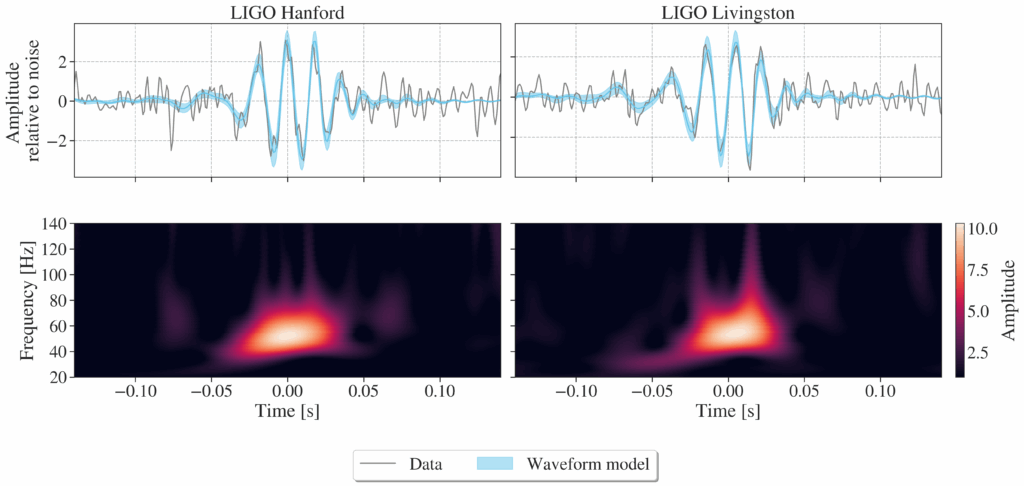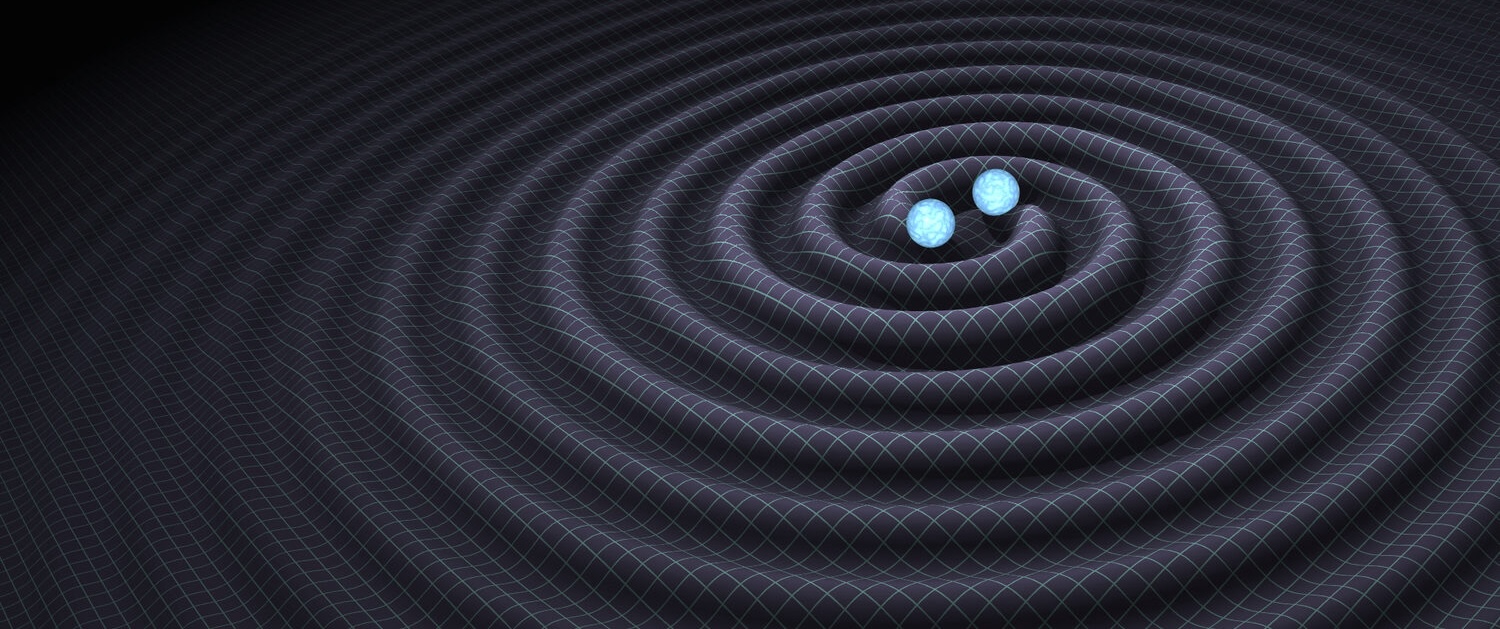On 14 July 2025, the LIGO-Virgo-KAGRA Collaboration announced the discovery of GW231123, the merger of the most massive black holes ever observed with gravitational waves, using the US National Science Foundation-funded (NSF) LIGO Hanford and Livingston Observatories. The two black holes that merged were approximately 100 and 140 times the mass of the Sun. The merger produced a final black hole more than 225 times the mass of our Sun. The signal was observed during the fourth observing run (O4) of the LVK network on November 23, 2023.

Infographic “Meet GW231123” providing summary information about the gravitational wave event GW231123. [Image credit: Simona J. Miller / California Institute of Technology]
Publications & Documentation
- Publication: GW231123: a Binary Black Hole Merger with Total Mass 190-265 Msun
PDF download from LIGO DCC and preprint on arXiv.org - Press release
- Science summary [PDF flyer]
- Translations of the science summary [en] [bn] [ca] [de] [el] [es] [fi] [fr] [hi] [it] [ja] [ma] [mr] [ta] [vi] [zh]
- Translations of the infographic [en] [en2] [bn] [ca] [de] [es] [fr] [ja] [ma] [pl] [pt] [ta]
- See the main ligo.org detection page for further resources.

Figure 1 from the science summary showing the GW231123 signal in data from the LIGO Hanford (left) and Livingston (right) detectors. The top panels show the amplitude of the data over time (grey traces). The shaded blue band shows our estimate of the true signal. The bottom panels are spectrograms, also known as time-frequency maps, which show the signal amplitude over time (horizontal axis) and across frequencies (vertical axis). Brighter colors represent a stronger signal.

